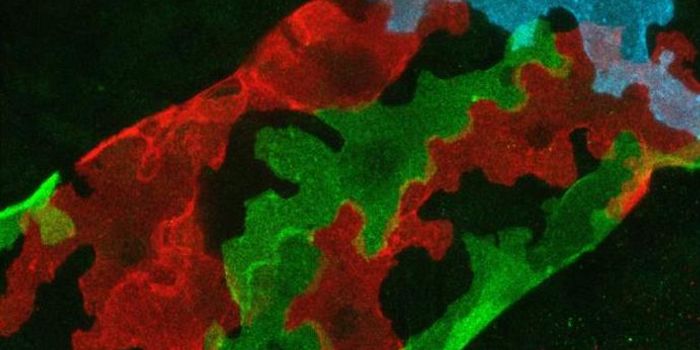After a Wound, Cells Initiate a Complex Signaling Cascade
We experience many minor cuts and bruises throughout life, relying on our body’s natural healing abilities to repair small wounds. As important as it is, wound healing is not a process that is well-understood. For example, the precise mechanisms that living cells use to initiate injury repair are not known. New work from researchers at Vanderbilt University has revealed more about the process, and their findings have been reported in Biophysical Journal and are described in the following video.
While previous work has indicated that calcium ions are an important part of the physiologic response to wounds, calcium ions play a major role in many aspects of physiology. Researchers led by Shane Hutson, Professor of Physics and Biological Sciences and Andrea Page-McCaw, Associate Professor of Cell and Developmental Biology, wanted to dig deeper. They used cells that are located on the backs of fly pupae, which express a protein that glows when exposed to calcium ions.
This tool enabled the investigators to follow changes in calcium concentration changes in cells that are near a wound. They could see those changes in a living being, unlike the typical cell culture models used for this kind of work; they were using unprecedented precision on a small timescale.
A laser that could be focused to less than a millionth of a meter was utilized to punch holes in individual cell membranes, creating microscopic wounds in the epithelial layer of the pupae. The laser made exact, microscopic cuts that could be controlled and repeated. Even the tiniest of wounds caused a cavitation bubble, from a microscopic explosion, which was strong enough to injure cells nearby.
"As a result, the damage the laser pulses produce is quite similar to a puncture wound surrounded by a crush wound--blunt force trauma in forensic terms -- so our observations should apply to most common wounds," explained the first author of the work, Erica Shannon, a doctoral student in developmental biology.
The investigators wanted to test two hypotheses about the trigger for wound responses. One suggests that dying cells secrete proteins into surrounding fluid, which causes neighboring cells to increase calcium levels. This increase in calcium enables the cells to go mobile, which allows them to seal off the wound. The other hypothesis states that special connections between cells, called gap junctions, help spread the trigger, likely a molecular signal. The team found that both are right.
"What is extremely exciting is that we found evidence that cells use both mechanisms," explained Shannon. "It turns out cells have a number of different ways to signal injury. This may allow them to differentiate between different kinds of wounds."
The new work has shown that after the tissue is wounded, a complex series of calcium signaling events are initiated in the surrounding area. It starts with calcium rushing into the cells around the wound, which happens in less than a tenth of a second. The researchers suggested this happens because the cell membrane tears open.
Waves then move through the healthy tissue surrounding the wound (as seen in the video). The first is short-lived and has a limited range, and is likely moving signaling molecules through gap junctions. The second is much slower and goes much farther. The researchers are working to learn more about this event, and have suggested that larger molecules move in this second wave. This wave may also be dependent on the size of the wound. These events are described in great detail in the research paper.
"Once we understand these trigger mechanisms, it should be possible to find ways to stimulate the wound healing process in people with conditions, like diabetes, that slow down the process or even to speed up normal wound healing," concluded Hutson.
Sources: AAAS/Eurekalert! via Vanderbilt University, Biophysical Journal








